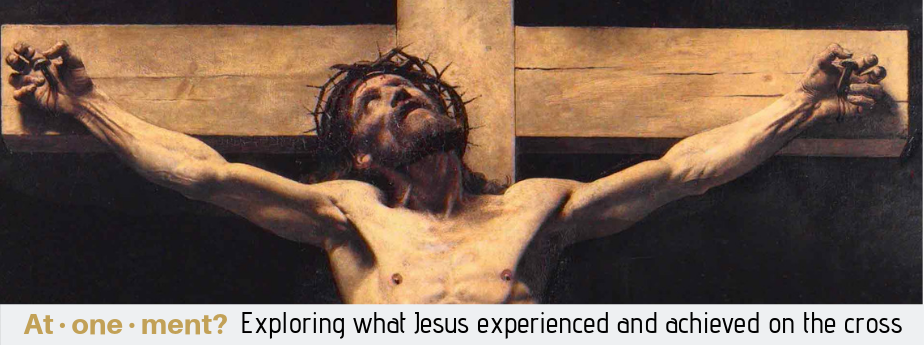Summary
What is “atonement”? This is an English word that was simply “made up” by William Tyndale when he translated the Christian scriptures into English. It’s beautiful how what Jesus has done has got into our everyday language! But what was Tyndale trying to express with this word?
The New Testament is not constrained to only one view, or image, or model of the atonement. There a multiple metaphors used to describe the atonement, each one describing a different aspect. What can we concluded from the need for multiple metaphors to describe the atonement? That the atonement is great and broad, it cannot be reduced down to one thing. Without multiple metaphors you will miss part of the picture, and so the atonement is impoverished. That’s sad for your experience, and sad for Jesus’ glory! This series will attempt to explore the breadth of the atonement, the topics and passages we will be focusing on are:
- Week 1, “It is finished!”, John 19:16-30; Hebrews 10:8-14, (Mar 10).
- Week 2, Redemption, Psalm 130 (7-8); Ephesians 1:1-10; 1 Corinthians 6:18-20, (Mar 17).
- Week 3, Sacrifice, Romans 3:21-25; Hebrews 5:1-10; 10:4-10; 1 John 2:1-2, (Mar 24).
- Week 4, Justification, Romans 3:21-28; 5:15-21; Acts 13:38-39, (Mar 31).
- Week 5, Victory, Matthew 12:13-21; 1 Cor 15:53-57; Col 2:13-15, (Apr 7).
- Week 6, Reconciliation, Ephesians 2:1-16; Romans 5:6-11, (Apr 14).
This is our ‘Lenten series’, with lent traditionally having a very specific focus: The Cross of Christ. Lent isn’t just the end of pancakes or chocolate, nor anticipation of long weekend… but time for reflection on the shame and sorrow that Jesus experienced at the cross; and all that he achieved there; and how it is to shape our lives.
